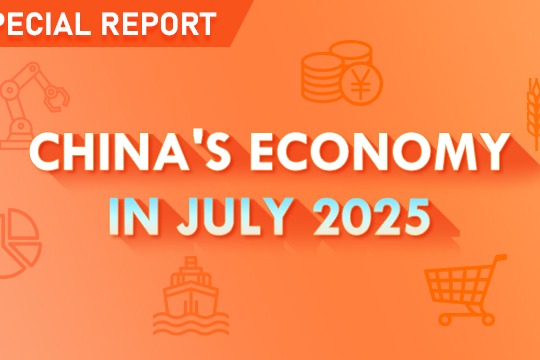State banks' asset quality, profits improve


The asset quality of large State-owned commercial banks in China stabilized and improved in the first half of this year, with noticeable improvements in indicators like the nonperforming loan ratio.
Industrial and Commercial Bank of China, the country's largest commercial lender by assets, has effectively contained a rebound of the NPL ratio since the outbreak of COVID-19. Its NPL ratio fell 0.04 percentage point from the end of last year to 1.54 percent at the end of June.
The enhancement of its asset quality goes hand in hand with the gradual recovery of the Chinese economy from the pandemic.
"As the domestic economy continuously recovered in the first half, we saw a steady slowdown in the growth of our bank's corporate loans whose principal and interest repayments were deferred … Such loans are mainly associated with clients in road transportation and new-type urbanization industries, of which the risk resistance capacity is relatively strong, and our bank took effective measures to manage such loans," said Wang Jingwu, senior executive vice-president of ICBC.
China's forthcoming exit from the policy of deferring payments of principal and interests on inclusive loans to micro and small businesses next year will have a limited impact on the asset quality of China Construction Bank Corp, said Cheng Yuanguo, chief risk officer of the bank.
"CCB implemented the five-category classification of loans strictly and prudently without changing classification standards during the extension of inclusive loan repayments. We also made arrangements for post-COVID-19 risk management through forward-looking risk identification and monitoring, fully exposed risks and stepped up NPL disposal to release potential risks," Cheng said.
Although China will still face external uncertainties in the second half, direct factors supporting its economic operation are increasing step by step. The asset quality of CCB is expected to remain stable and its ability to offset risks will remain adequate, he said.
At the end of June, the NPL ratio of CCB was 1.53 percent, down 0.03 percentage point from the end of last year.
Over the same period, Bank of China also recorded a decline in the NPL ratio by 0.16 percentage point to 1.3 percent.
"The overall asset quality of BOC was further consolidated, especially as its domestic institutions stepped up efforts to dispose of NPLs," said Liu Jiandong, chief risk officer of the bank.
Its overseas institutions faced pressure on asset quality due to external uncertainties. By the end of June, its NPL ratio overseas increased slightly from the end of last year, Liu said.
"New NPLs overseas mainly occurred in the industries which were significantly affected by COVID-19, such as the real estate and aviation industries, but the overall risk remains controllable. In the second half, the overall asset quality of our bank is expected to achieve a stable performance while securing progress at the same time," he said.
For Agricultural Bank of China, the NPL ratio fell 0.07 percentage point from the end of last year to 1.5 percent at the end of June. The bank is expected to achieve stable performance and improvement of full-year asset quality, said Zhang Qingsong, president of the bank.
"Although China is still facing complex and serious internal and external circumstances, we believe that Chinese economic fundamentals, which will sustain long-term growth, remain unchanged. As the state of operation of clients is gradually improving, their default risks will become lower," Zhang said.
The bank will pay close attention to risks associated with clients in traditional high-risk areas such as low-end manufacturing, retail and wholesale, some large and medium-sized enterprises with low efficiency and slim profits, government financing vehicles at relatively low levels, and clients in traditional energy and housing sectors.
While striking a balance between stabilizing growth and preventing risks, China's six largest State-owned commercial banks also reported steady profit growth in the first half.
Among them, Postal Savings Bank of China Co recorded the largest growth in net profit, which was 22.48 percent year-on-year, followed by Bank of Communications Co (15.1 percent), ABC (12.5 percent), BOC(11.79 percent), CCB (10.92 percent) and ICBC (9.8 percent).
Factors contributing to their net profit growth include growth in net interest income, the increase of net fee and commission income, the improvement of asset quality, and the low base effect from pandemic-depressed net profit last year, bank executives said.




































